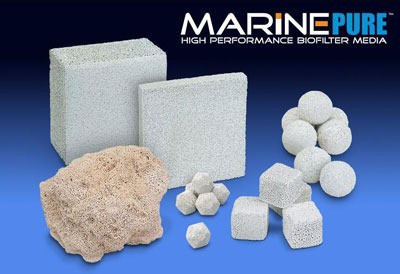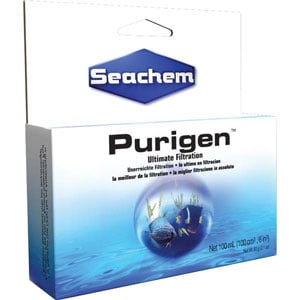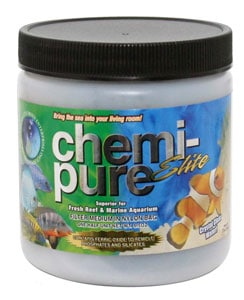Owning an aquarium means cleaning out the filtration regularly. I used to service an aquarium at a restaurant and when I cleaned the filters it could stink out the whole place! The filter media was working well, but not to the delight of the dinner guests!!
Every aquarium needs filtration to allow it to control and convert toxic compounds so that the livestock does not become poisoned. Filtration is made up of a 3 pronged attack.
Biological Filtration, Mechanical Filtration & Chemical Filtration all make up the main methods of reef tank filtration. Floss, Activated Carbon, GFO, Bio Pellets, and Ceramic Pieces are the most common media materials used to create these three methods of aquarium filtration.
This article is aimed at introducing you to the various forms of aquarium filtration media that are available and how each one is to be used and what it is to be used for.
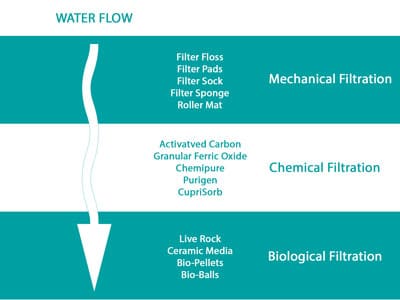
What Are Aquarium Filter Floss, Filter Socks & Roller Mats?
Filter Floss, Filter Socks, and Roller Mats are mainly used as the primary means of mechanical filtration. What this means is that they physically trap large particles of debris and detritus and as time goes by they will become clogged until they are fully blocked.
To keep this type of filter media working at its most efficient, you need to frequently change or clean the media.
- Filter floss can just be removed, discarded and a new piece put in place.
- Filter socks will need to be removed and replaced with a clean sock. Most people will keep several and rotate them through the washing machine on a water-only cycle.
- Roller Mats are a relatively new product in the hobby and automatically replace the filter media as it becomes clogged. The media comes on a roll and goes through the device, which slowly turns until all the roll has been used. You then replace the roll and dispose or clean the old one. These devices can allow you weeks of maintenance-free filter changes.
What Are Aquarium Filter Sponges?
There are several types of sponges available and they are all designed to do a specific purpose.
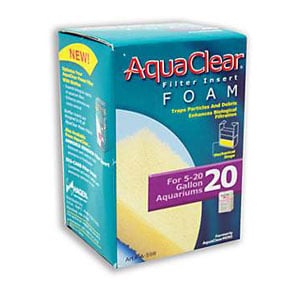
Sponges Designed as Mechanical Filters
These are created using a fine web of inert plastic material designed for physically trapping particles, just like the floss and socks above. They must be removed and thoroughly washed to ensure all the detritus is removed from them.
Sponges Designed as Biological Filters
These are designed to create maximum surface area. The surface area is used to grow the beneficial bacteria that convert Ammonia and Nitrites into Nitrates and Nitrogen gas. It will also trap detritus and must be cleaned thoroughly too. Usually, this type of sponge will sit behind some form of mechanical filter/sponge so that most of the detritus has been collected before it reaches this sponge.
Sponges Designed as Chemical filters
These are sponges that are either made of or coated in a chemical filter media like Activated Carbon. They are used to remove organic pollutants and heavy metals from the water and once all their pores are full you will need to dispose of and replace this type of sponge.
These sponge arrangements are most commonly found in canister filters and small HOB (Hang-On-Back) filters.
When you wash ANY filter media, especially sponges, and plan to return them back to the aquarium, you need to rinse them out in a bucket of aquarium water! This will keep the bacteria alive. You must then dispose of the dirty water in the bucket.
NEVER wash any filter media under a running tap or faucet! You Will Kill The Bacteria
What Are Aquarium Ceramic Pieces?
These types of filter media are designed to house beneficial bacteria. They are created just like the sponges to provide the most amount of surface area per piece to get as much bacteria growing as possible. These are great for use in HOB and canister filters but are generally not used in saltwater aquariums as Live Rock does the same job.
These ceramic pieces must be washed frequently as not to allow detritus to collect and begin breaking down and cause high Nitrates.
To find out more about Live Rock Check out my ‘What Is Live Rock?’ article.
A relatively new form of ceramic media are ‘Blocks, Plates, and Spheres’. These are being installed in many aquarium sumps to provide more surface area for bacteria to colonize. The benefit of these new products is that they are extremely porous and hardly trap detritus. You will have to rinse them one in a while but that is all. Most aquarium owners will be able to find one of the products to fit in that ‘Unused space’ in their sump.
MarinePure is one of the most popular products available and you can click the link to see them at Amazon.com.
What Is Aquarium Activated Carbon?
Carbon or Activated Carbon are sticks or granules made from high quality, high porosity Bituminous Coal.
The main purpose of Activated Carbon is to absorb organic pollutants and heavy metals from the water.
The other benefit of using Carbon is that it will polish your water and make it sparkle. If you look at your tank and you see the water has a yellow tinge to it, then its time to replace the Carbon.
An easy way to test this is to take two white buckets or containers. Fill one with a small amount of aquarium water and one with new water. You will be able to see the color difference immediately when all the Carbon has been used.
Running Carbon will also be very important when you start to get a lot of coral in your tank. When corals grow into close proximity to one another they begin a chemical attack on their neighbors if they do not ‘Get Along’.
These chemical pollutants are released into the water column and its the Carbon’s job to remove them. Without Carbon, you could have slow coral growth, coral death or possibly muted colors on the unhappy coral.
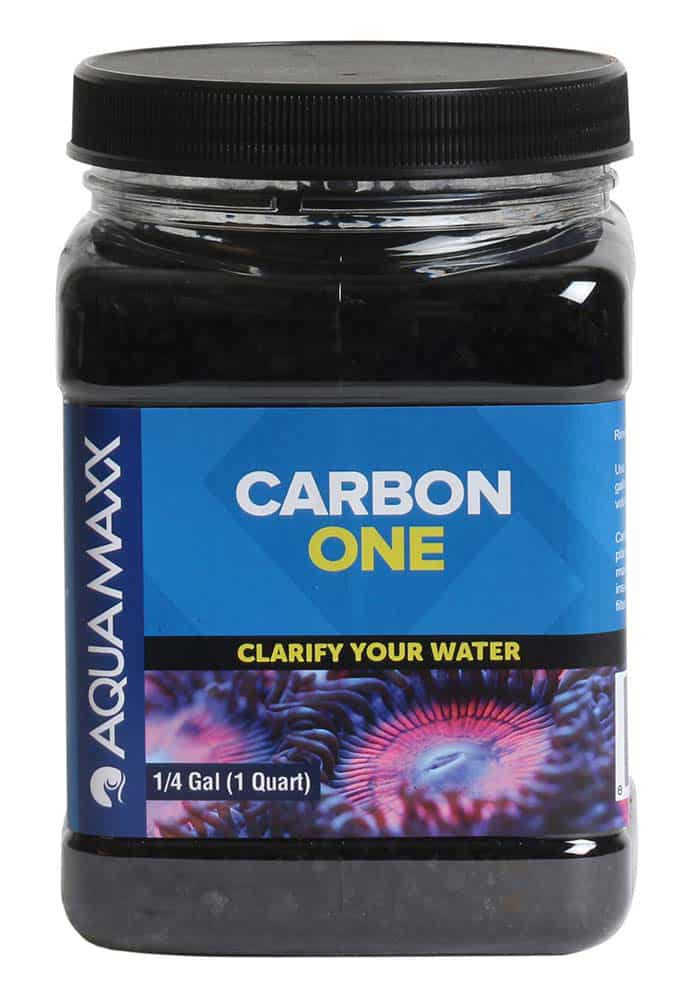
Available at Amazon.com
Depending on your system there are 3 ways to install and run Carbon on your aquarium:
1. As a sponge mentioned earlier if you have a Canister or HOB filter
2. Placed in a mesh bag, secured and added to your sump area
3. Ran in a media reactor that prevents the Carbon from clogging together and ensures the all the Carbon pieces get used. – This is the most efficient way to run Carbon.
Your aquarium will dictate how fast the Carbon exhausts, but typically it would require changing every 3-6 weeks in most aquariums.
There are several types of Activated Carbon on the market, each with differing capacities:
ROX Carbon:
BEST
Recommended usage is 1 TBSP for every 10 gallons
Lignite Carbon
BETTER
Recommended usage is 1 TBSP for every 8 gallons
Bituminous Carbon
GOOD
Recommended usage is 1 TBSP for every 4 gallons
What Is Aquarium GFO? – Granular Ferric Oxide
This granular filter media is specifically aimed at removing Phosphates from the water. Phosphates are one of the building blocks needed for algae to grow. The others are light and Nitrates.
By running GFO you will help to reduce the amount of Phosphate in your water and reduce the possibility of an algae outbreak. GFO is used more of a prevention than a cure but it will help if you add it to an algae-covered aquarium, it will just take time.
Phosphates also reduce coral growth as it inhibits the coral skeleton from absorbing the Calcium and Carbonate (Alkalinity) ions they need to build their skeletons.
GFO can be installed the same as Carbon, either in a mesh bag or in a reactor. Again, the reactor installation keeps the granules tumbling and allow them all to be used. GFO will need to be replaced once it is consumed and depending on how much Phosphate your water contains, will depend on how quickly it becomes exhausted.
GFO will typically last 4-6 weeks in most aquariums.
There are many different Phosphate removal products on the market, each with its own recommended dosing instructions.
What Is Purigen?
This is a synthetic filter media that is designed to absorb Ammonia, Nitrite and Nitrate compounds. It also has an added benefit of polishing the water similar to what Activated Carbon does.
As the Purigen becomes exhausted it changes its color to dark blue and eventually black. The great benefit to this product is that you can recharge the media by removing it and washing it in a bleach and water solution.
Purigen can also be run in a mesh bag or a media reactor.
Recommended usage is 1ml for every gallon
What Is Chemipure?
This is a manufactured mix of Activated Carbon and a ‘Purigen’ type of ion removing compound that helps to remove organic waste and absorb the harmful Ammonia, Nitrate and Nitrate compounds. It comes in a bag which can be placed in the sump and will have to be disposed of off once it is exhausted.
The manufacturer recommends you change this out every 4-6 months providing you have sized the amount of Chemipure correctly. Once your aquarium begins to get cloudy, it’s time to change the media.
You can now also get Chemipure Elite which adds a Ferric Oxide material to the media to help reduce Phosphates and Silicates at the same time, but only lasts 4 months.
Recommended usage is 1 unit for every 5 – 40 gallons
What Is CupriSorb?
This is a type of filter media that is used more in emergency situations. It is a synthetic ion absorbing style media that removes Copper from the water. Copper is toxic to invertebrates and coral and this is an effective media to help do that.
Some aquarists run Cuprisorb constantly if they have high levels of Copper in their city water supply that the RO/DI unit is unable to completely remove.
CupriSorb will turn a dark blue as it begins to exhaust and it can be removed and recharging by soaking in a water/muriatic acid solution.
CupriSorb works best when placed in a mesh bag in a high flow area of your filter/sump.
Recommended usage is 0.6ml for every gallon to remove 12ppm of Copper
You can find it Here at Amazon.com
What Are Aquarium Bio-Pellets?
These are synthetic pellet made of PHA (Polyhydroxyalkanoates) that are like steroids to Nitrate consuming bacteria! The bio-pellets create a large surface area to live on and feed the bacteria, thus growing the number of bacteria that feed purely on Nitrates within your water.
As the bacteria multiply and consume the bio-pellets, the quantity you see decreases. To replenish the supply, open the lid of the reactor and pour in some more pellets. Easy!
It takes approximately 2 months for the bacteria to multiply and begin consuming the pellets, so leaving this media to do its thing is key.
Bio-pellets are best utilized in a reactor that allows the pellets to tumble and give the maximum surface area contact to the water.
Recommended usage is 1 cup for every 50 gallons
You can find them Here at Amazon.com
What Are Aquarium Bio Balls?
Bio balls are an older technology media that are usually made of an inert, high-density plastic that provides a very large surface area for beneficial bacteria to colonize on.
The main problem with bio balls is that they also trap detritus very well, which leads to high Nitrate problems. New technology such as the MarinePure Ceramic Media range provides a much bigger surface area and does not trap detritus.
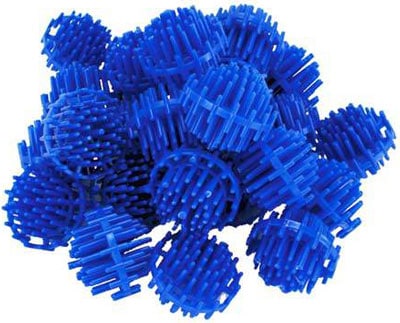
For more information please see my article
‘Can Bio Balls Be Used In A Saltwater Aquarium?‘
To Finish
The filtration required in a saltwater aquarium is a multi-pronged attack on the pollutants that are constantly trying to poison your inhabitants. The mix of filtration equipment running various types of media covering the three types of filtration is a must.
Each aquarium system is different and research into the types of media that will fit and run on your system will be required to ensure you are providing the best filtration possible.
On my system, I run Filter Socks, Filter Floss, Activated Carbon and Bio-Pellets and my Nitrates and Phosphates are as close to zero as I can get without getting silly, and my water sparkles. I may look to add in some MarinePure Ceramic Media in the near future just to provide more surface area for bacteria to colonize.
Another great addition to add to your filtration army is a Refugium to grow Macro-Fauna and Macro-Algae.
You can find all of these filter materials and more with their prices, reviews and where to purchase them in my
Recommended Essential Products For On-Going Maintenance Page.
Further Reading
You may find these articles helpful too:

